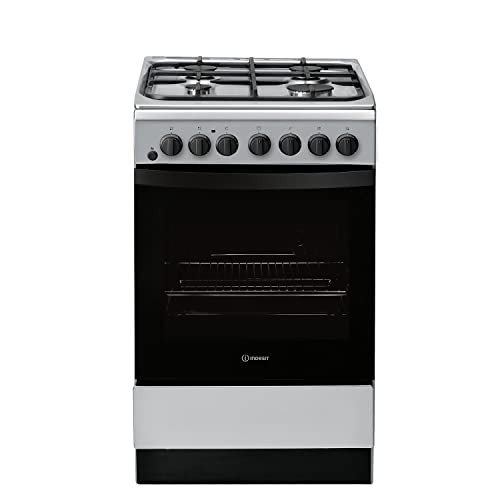Understanding Cooker Hobs and Ovens: A Comprehensive Guide
In modern-day kitchen areas, cooker hobs and ovens are essential home appliances that define cooking practices and preferences. Selecting the best combination of these devices can substantially improve cooking experience, improve performance, and even raise home aesthetics. This post will check out numerous elements of cooker hobs and ovens, clarifying types, functions, advantages, and maintenance suggestions, while also attending to typical inquiries.
Types of Cooker Hobs
Cooker hobs come in numerous types, each with distinct features dealing with various cooking designs. Here's a summary of the most typical types:
| Type | Description | Pros | Cons |
|---|---|---|---|
| Gas Hob | Utilizes gas burners for heating; deals immediate temperature control. | Instantaneous heat and outstanding control. | Needs a gas connection; may be less safe. |
| Electric Hob | Operates using electric coils or smooth surface area; heats up gradually. | Even heat distribution; easy to tidy. | Takes longer to warm up; less control. |
| Induction Hob | Uses magnetic fields to heat pots straight, making it energy effective. | Fast cooking; energy-efficient. | Needs compatible pots and pans; more costly. |
| Halogen Hob | Employs halogen bulbs for instant heat; supplies instantaneous temperature modification. | Incredibly fast heating; visible heat. | Takes in more power; may not uniformly heat. |
Picking the Right Hob
When choosing a hob, think about the following elements:
- Cooking Style: Do you choose the precision of gas, the benefit of electric, or the efficiency of induction?
- Pots and pans Compatibility: Ensure your pots and pans work with the kind of hob.
- Kitchen Layout: Space and design typically dictate the kind of hob that matches your kitchen.
Kinds of Ovens
Likewise, ovens have progressed considerably, using numerous cooking approaches that can complement particular culinary styles. Here are the common types of ovens:
| Type | Description | Pros | Cons |
|---|---|---|---|
| Traditional Oven | Traditional baking oven that uses electric or gas heat from the top and bottom. | Versatile; great for baking. | Longer preheat and cooking times. |
| Stove | Uses a fan to circulate hot air, allowing even cooking and much faster baking times. Distributes heat uniformly. | Faster cooking; even browning. | Slightly more pricey; might dry food out. |
| Steam Oven | Cooks food utilizing steam, protecting nutrients and moisture. | Healthier cooking; retains food taste. | Takes longer to cook; more pricey. |
| Microwave Oven | Utilizes electromagnetic radiation to heat food rapidly. | Immediate cooking; suitable for reheating. | Minimal cooking methods; might impact texture. |
Choosing the Perfect Oven
When selecting an oven, keep these aspects in mind:
- Cooking Habits: Are you a frequent baker or most likely to reheat leftovers?
- Space Requirements: What are the measurements of your kitchen?
- Budget plan: Consider not simply the purchase rate but likewise energy efficiency gradually.
The Importance of Cooker Hobs and Ovens in Cooking
The right mix of cooker hob and oven can enhance culinary abilities, allowing food enthusiasts to experiment and produce a large range of meals. Here are a couple of factors why these devices are essential:
- Efficiency: Modern hobs and ovens featured functions that optimize cooking times and energy use.
- Versatility: Different cooking techniques (bake, grill, roast, steam, and so on) expand the range of dishes one can prepare.
- Visual Appeal: Stylish styles can elevate the overall appearance of a kitchen, making it both practical and inviting.
Often Asked Questions (FAQs)
1. What upkeep do cooker hobs and ovens need?
- Routine cleaning after use to prevent buildup.
- Regular checks for gas leaks (for gas hobs).
- Making sure the electrical connections are protected.
2. Can I use any cookware on an induction hob?
No, induction hobs need ferrous cookware (i.e., magnetic) to function. This suggests stainless steel and cast iron work, while glass and aluminum pots might not.
3. How do I identify the ideal size oven for my kitchen?
Measure your available space and think about the volume of cooking you typically carry out. Standard ovens vary in size, and bigger designs typically have extra functions.
4. Are stove better than conventional ovens?
It depends on individual preference. Convection ovens provide faster and more even cooking but might not be perfect for all baking dishes, especially those requiring particular temperatures.
5. What is Ovens On Sales of a cooking hob and oven?
With proper care, both hobs and ovens can last anywhere from 10 to 20 years, depending upon frequency of usage and upkeep.
Picking the ideal cooker hob and oven not just simplifies the cooking procedure but can likewise redefine one's culinary experience. Understanding the different types, their benefits, and upkeep will empower customers to make informed choices, guaranteeing that their kitchen is equipped to deal with meals from the most basic to the most elaborate. Knowledge about the capabilities of these important home appliances enables culinary imagination and performance, eventually leading to a more satisfying cooking journey.

